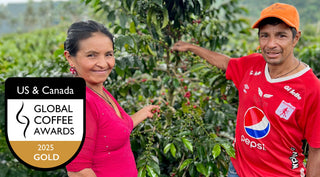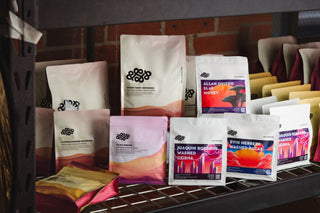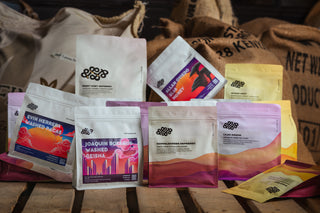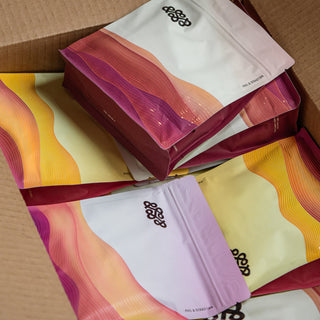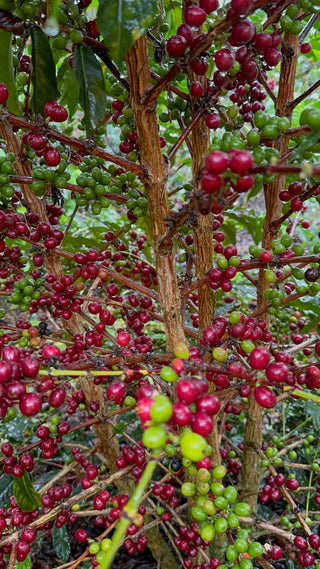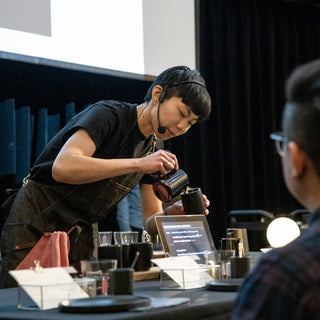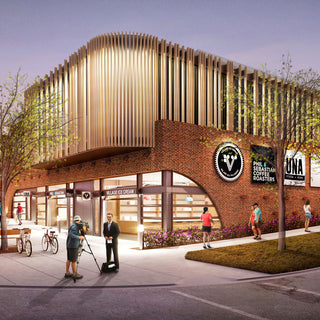Going to Paty Perez’s farm is always such an uplifting experience. Paty and her mom, Auri, have been living in their house for over 40 years (before Paty was born). They love their land, their trees and their coffee plants. They are generous, gracious and always looking for ways to improve their coffee practices.
I first visited Paty in February of 2012 and fell in love with the coffee as soon as I tasted it, with its notes of tropical fruits, creamy sweet mouthfeel, and juicy Kenya-like acidity. I was also impressed by her determination and desire to improve both the quality of her coffee and their living conditions. Paty’s father died nearly nine years ago, and her brothers moved abroad to pursue opportunities, leaving her and her mom in charge of the farm. It’s not very common to see a woman run a coffee farm, but it’s a breath of fresh air. Paty is detailed oriented and runs her farm with a firm hand. She expects a lot from her workers but treats them very fairly, and they clearly respect her.
One of the saddest things about the coffee from Paty’s region of Huehuetenango is that it deteriorates very quickly. It’s common for me to taste a coffee from there and score it 88 points while I’m in Guatemala but by the time the coffee arrives in North America, it has degraded to a mere 80 points. Without getting too technical, the drying and storage practices used in Huehuetenango are largely to blame for the quick deterioration. So last year before the harvest, we launched a pilot project with Paty aimed at overcoming this major shortcoming of her coffee (and all other coffees from Huehue). We hired a local carpenter, named Eliseo, to build 10 large drying beds for Paty to use. Most of the coffee we purchased from her last year was dried on the beds and a small bit was dried the traditional Huehue way. Although the coffee tasted very similar in Guatemala (i.e. shortly after harvest), the results a few months later were beyond convincing. The coffee dried on beds still had its vibrancy and cup quality, while the coffee dried the normal way was a mere shadow of its former self. As far as I know, Paty is the only producer in Huehuetenango to use drying beds to dry her coffee. I am proud of this as she is a true innovator.

During my visit, I shared all the results with Paty, and she was very surprised and happy to hear that the new method worked. When we spoke about changing the drying over to beds for this coming harvest, she then explained to me the limitations of the new drying method. It’s much slower, so to dry the same amount of coffee, she would need more drying space than if she were to dry on the concrete patios. We did some math and figured out how many new beds would be needed, but then I threw her a curve ball. We’ve seen some amazing results with drying in beds under shade (such as in our projects in Costa Rica and Colombia), so I proposed to her that we build a multi-bed structure under shade using a black mesh ceiling. Drying under shade draws out the drying process even longer so the math we did had to be revised to accommodate the slower drying method but nonetheless, Paty was game. I called Eliseo and met up with him later that day to show him the new drying structure we wanted him to build and the new beds (36 of them!). He quoted us $1000 to do the work and I quickly agreed. For us to make a $1000 investment in a great farm in order to drastically improve quality was a no-brainer. We took some measurements, improvised some drawings and by December 15th, Eliseo will install the new drying infrastructure at Paty’s farm. This willallow her to dry all of her coffee in beds under the shade, making her arguably one of the most progressive coffee producers in Guatemala.

One of the most rewarding parts of my visit was staying in Paty’s house and seeing how her home had improved over the years. This past year, they undertook a major renovation and built a large kitchen and dining room overlooking their farm. Auri loves to cook and is a major nature junkie so her new kitchen has a large window where she can look over the coffee farm and its incredible view while she cooks for Paty and Paty’s three-year old daughter, Isabela.

I’m excited to see where Paty’s coffee quality will go from here, but most of all I am proud to have played a part in improving the well being of Paty and her family.


